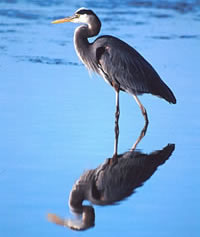TAKE A REST IN THE BAOBAB FOREST
The baobab, if you have heard or read about it or seen a TV program, will conjure up the vision of great, sparsely treed African flats. That’s where they are native. A baobab tree can be an entire ecosystem unto itself – with birds, animals, insects and even humans all relying on it one way or another.
Or at least that is the knowledge I had, until I came to the Northern Territory of Australia. I am driving from Katherine to Kununurra. A portion of this road runs through a baobab forest – not so much a dense ‘forest’ really, because the trees are spaced quite far apart, as though each has its own domain. These baobabs here are one evidence that the landmasses of Africa and Australia were once connected.
But driving through here gives me an entire new introduction to the baobab. Each single tree strikes a unique pose – a human stance. If you look at a tree a while, you can see a familiar pose: A soapbox orator in Hyde Park, making a point with hand gestures; an Inuit about to throw a lance at a seal; a whirling dervish with his hands positioned, ready to begin his move; an intent angler, exuding infinite patience; a profusely bearded Yukon panhandler, stooping towards the water; one half of a Tango duo, making the ‘dip’; and so on. And if a number of people were given pencil and paper, and asked each to write his own image of a given tree, the imaginings will be all different: Geisha greeting; Buddhist monk praying; Ballerina taking a bow.
You ought to pull up, and stretch your legs. Driving correctly on the wrong side of the road requires great concentration. So relax. Take a walk among the trees. As you consider their poses, they will bring together in your mind many distant points of time and many diverse sights – colorful beads that you have collected and thrown haphazardly into a cut crystal bowl. Now it is as though someone has taken a needle and thread, and has begun to string the beads according to his whims, in his own chosen sequence. And that gets you thinking about a sequence in life – your sequence. Then you might spot a breach in your life as well – like drifting, once-connected landmasses. You are sad perhaps, or nostalgic. What was that breach? “Does imagination dwell the most/Upon a woman won or a woman lost?”? And then, suddenly, you begin to be aware of your own reflective stance that you have struck, there, at that moment. The baobabs consider you, imaginary pencil and paper in hand.
Or at least that is the knowledge I had, until I came to the Northern Territory of Australia. I am driving from Katherine to Kununurra. A portion of this road runs through a baobab forest – not so much a dense ‘forest’ really, because the trees are spaced quite far apart, as though each has its own domain. These baobabs here are one evidence that the landmasses of Africa and Australia were once connected.
But driving through here gives me an entire new introduction to the baobab. Each single tree strikes a unique pose – a human stance. If you look at a tree a while, you can see a familiar pose: A soapbox orator in Hyde Park, making a point with hand gestures; an Inuit about to throw a lance at a seal; a whirling dervish with his hands positioned, ready to begin his move; an intent angler, exuding infinite patience; a profusely bearded Yukon panhandler, stooping towards the water; one half of a Tango duo, making the ‘dip’; and so on. And if a number of people were given pencil and paper, and asked each to write his own image of a given tree, the imaginings will be all different: Geisha greeting; Buddhist monk praying; Ballerina taking a bow.
You ought to pull up, and stretch your legs. Driving correctly on the wrong side of the road requires great concentration. So relax. Take a walk among the trees. As you consider their poses, they will bring together in your mind many distant points of time and many diverse sights – colorful beads that you have collected and thrown haphazardly into a cut crystal bowl. Now it is as though someone has taken a needle and thread, and has begun to string the beads according to his whims, in his own chosen sequence. And that gets you thinking about a sequence in life – your sequence. Then you might spot a breach in your life as well – like drifting, once-connected landmasses. You are sad perhaps, or nostalgic. What was that breach? “Does imagination dwell the most/Upon a woman won or a woman lost?”? And then, suddenly, you begin to be aware of your own reflective stance that you have struck, there, at that moment. The baobabs consider you, imaginary pencil and paper in hand.

